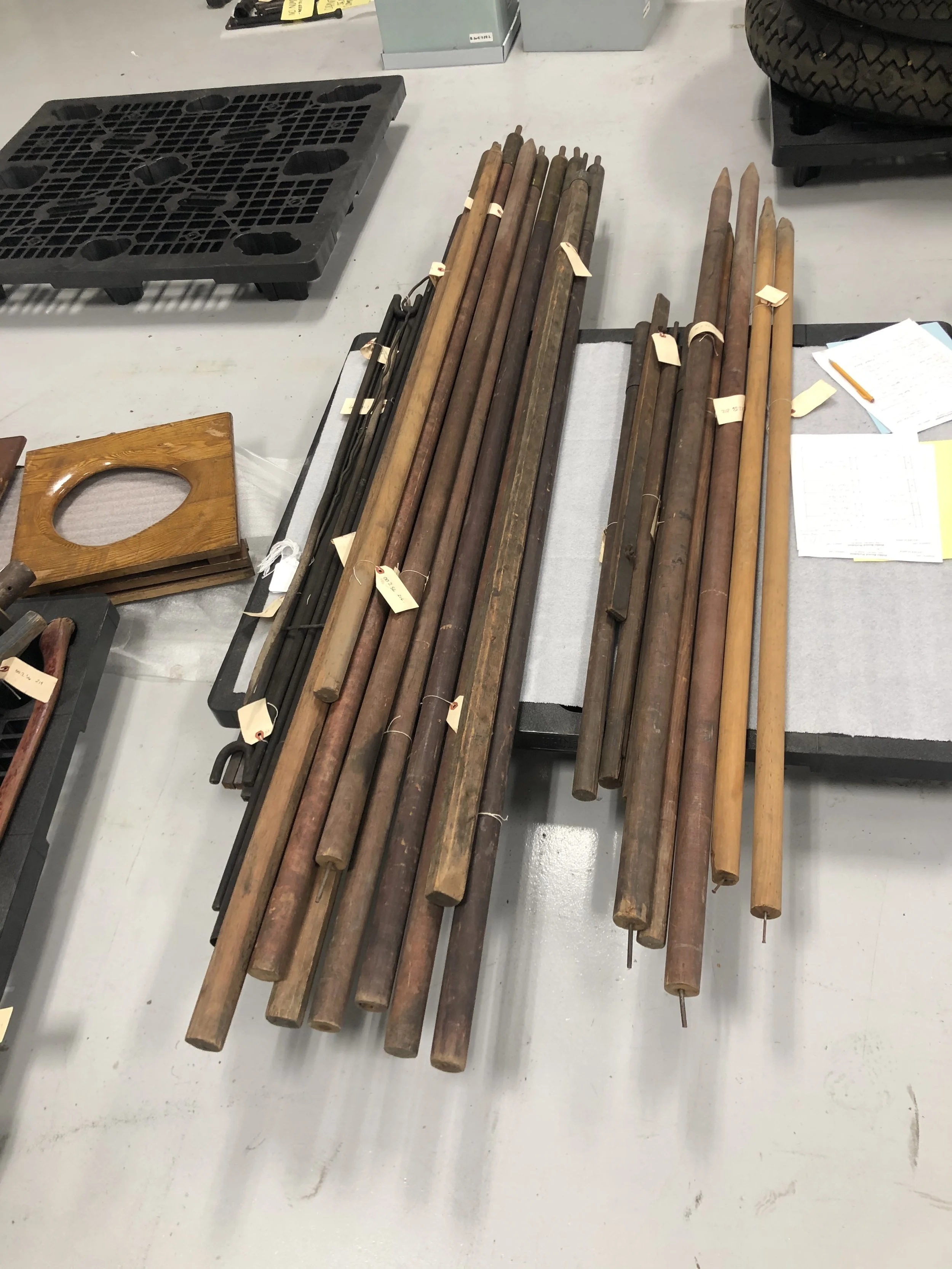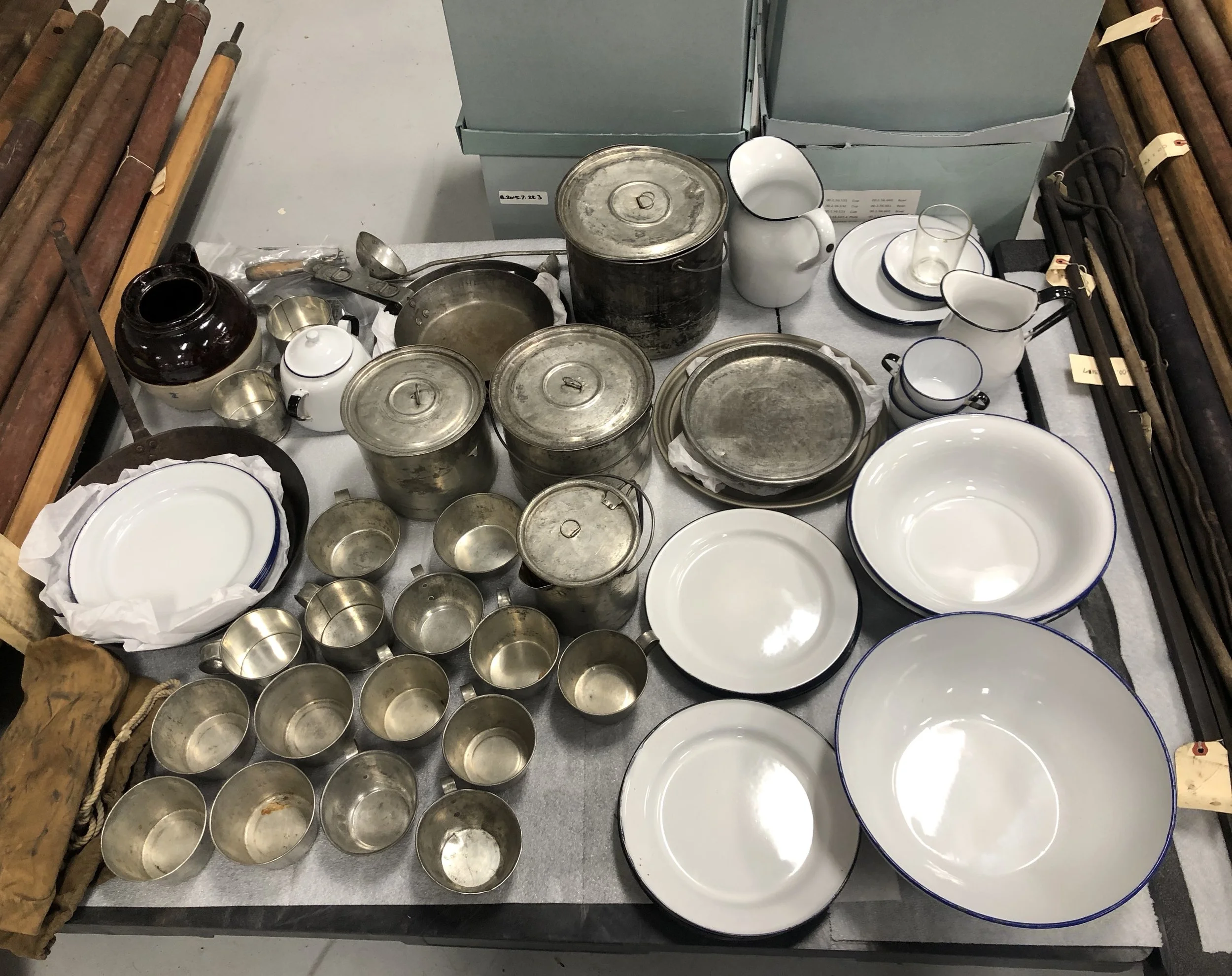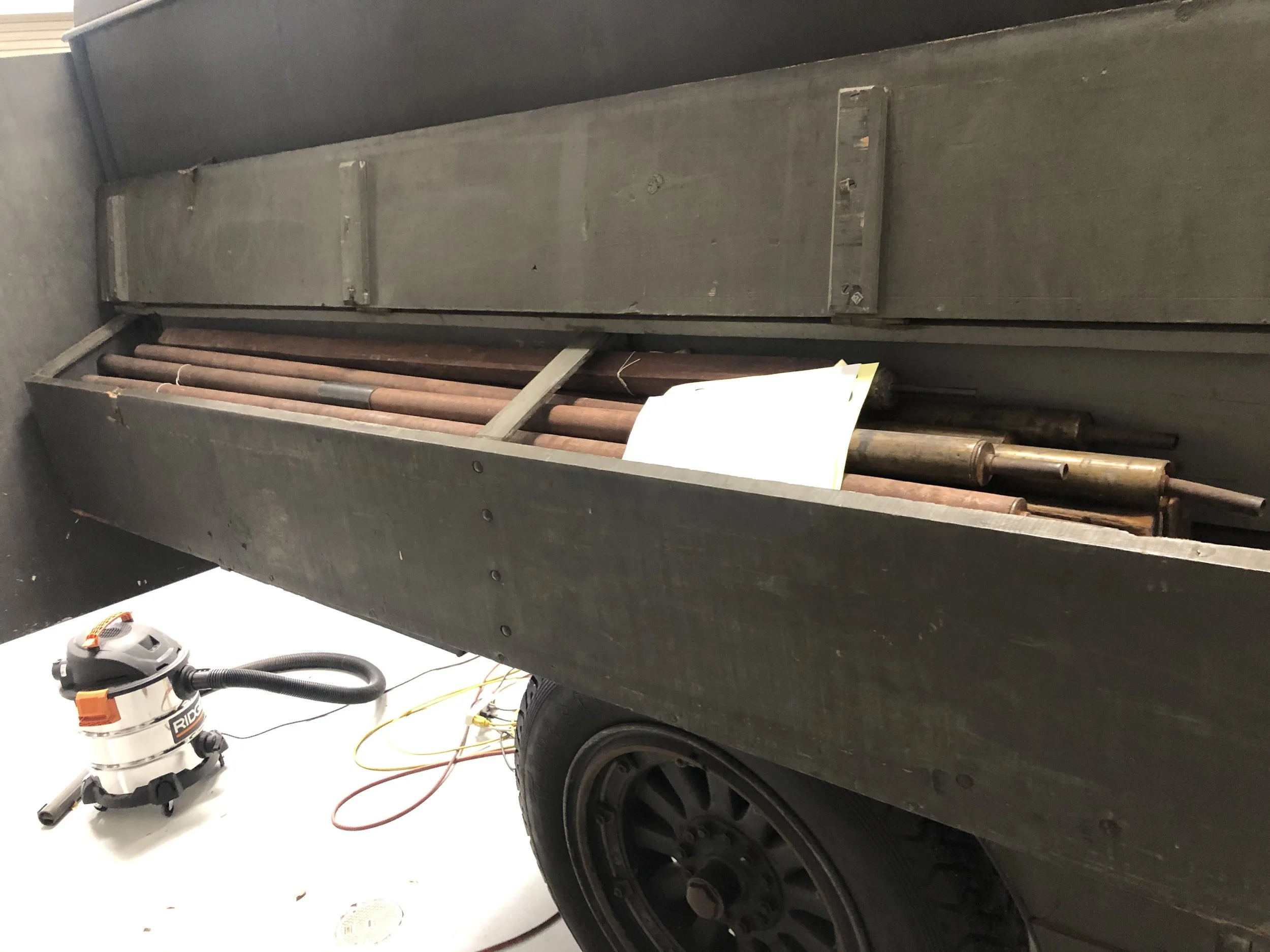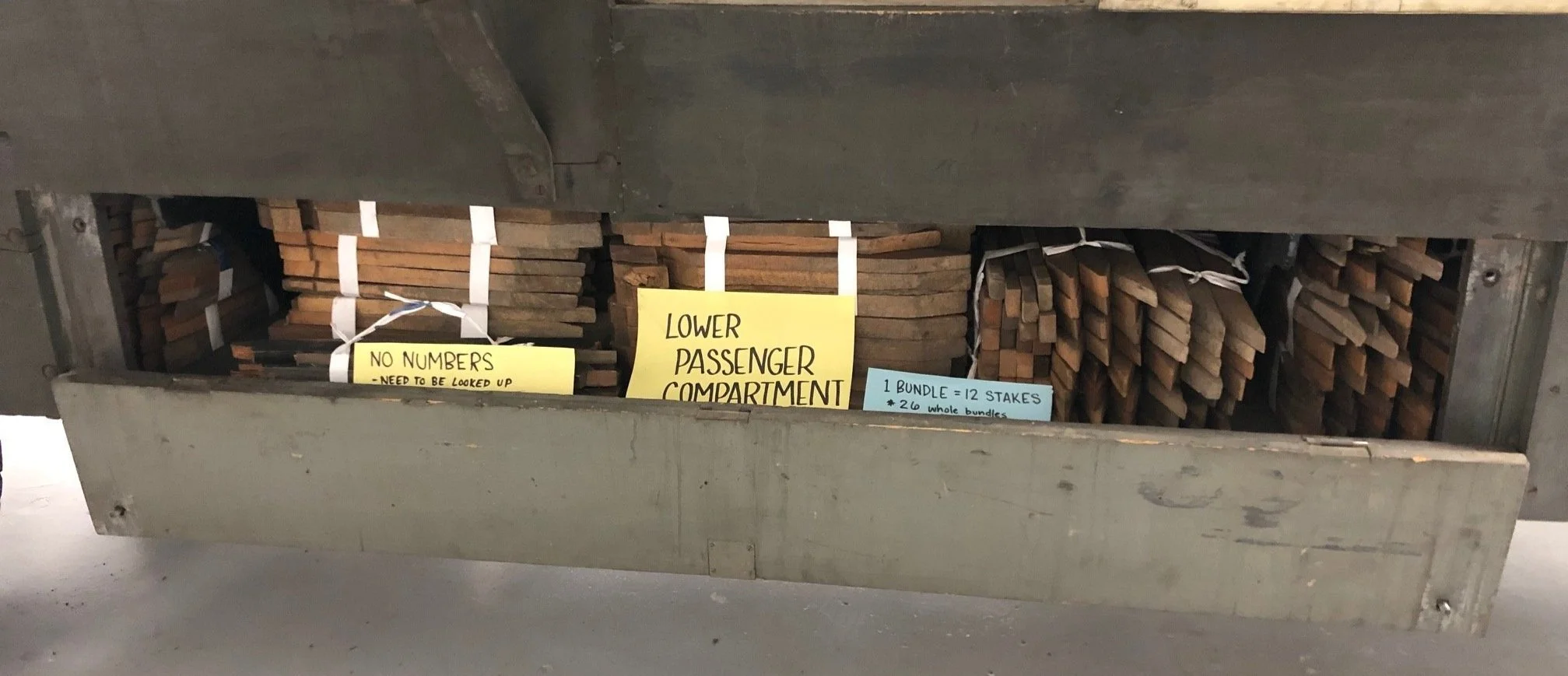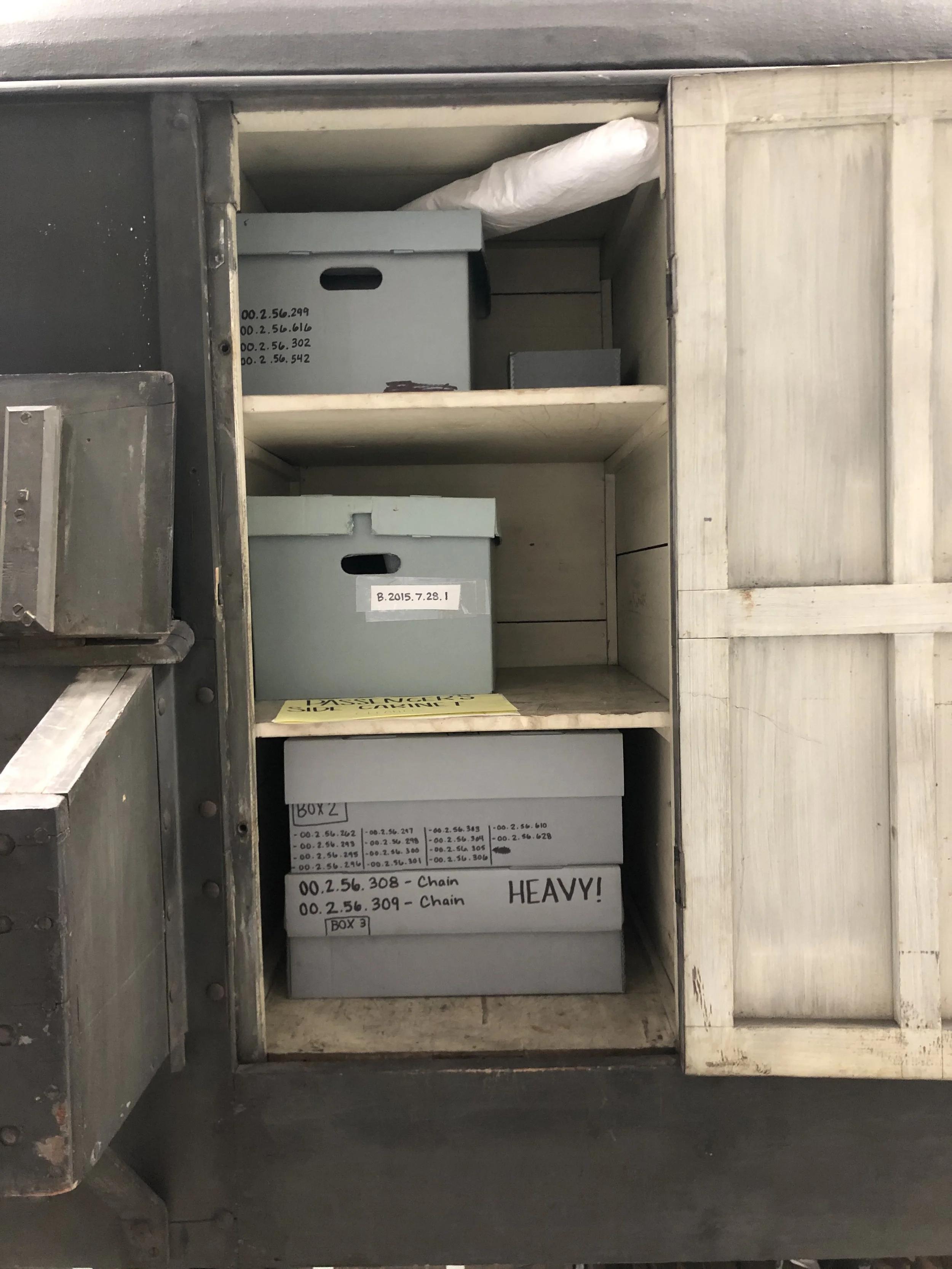White Camp Truck
(Object ID: 00.2.56)
Project Duration: 70 Hours
Date: 1921
Materials: Wood, paint, steel, cellulose nitrate, ceramic, textile, leather, nickel, rubber, glass
Object Description: The Vagabonds -- Henry Ford, Thomas Edison, and Harvey Firestone -- enjoyed their annual camping trips taken from 1916 to 1924. While the three men delighted in the outdoors, their accommodations weren't particularly rustic. This 1921 White truck traveled with them. It carried elaborate tents and camping equipment that provided many of the comforts of a good hotel.
Condition: Exterior is in good condition with light surface dust overall. Previous paint consolidation on painted wood sill at base of engine hoods. Slight corrosion present on the proper left fender. Undercarriage of vehicle has light dust and dirt on surfaces. Tires have light dust and need air. Rear hub caps are nickel plated and possess light corrosion.
All compartments and cabinets possess substantial amounts of dust and debris on surfaces as well as faded paint on wood surfaces. Mild corrosion present on clutch, handbrake, steering column, shifter, and foot brake in driver's compartment. Leather cushions are slightly brittle and weak. Four side curtains possess cellulose nitrate windows. Floorboards by hand break are weak and two small pieces have broken off.
Seven compartments in total (General contents below):
- Drivers Side Cabinet: Holds 2 tires
- Driver's Lower Compartment: Dishware, Axes and Mallets
- Driver's Side Compartment: Tent Poles, flags, metal poles
- Passenger Side Cabinet: Chains, dishware, flags
- Passenger Lower Compartment: Wooden stakes
- Passenger Side Compartment - Tent poles
- Rear Ramp Slot - Tent poles, tripod
Treatment:
All painted metal exterior cleaned with water and micro-fiber cloth. Painted wood surfaces were cleaned with Vulpex 3% in distilled water. All seven compartments of the vehicle were vacuumed with a HEPA vacuum to remove dust and dirt. Within passenger and driver's side compartments, tannic acid (2.5% in distilled water) was applied to corroded interior support braces. Undercarriage of the vehicle was cleaned with an electric pressure washer. Nickel plated hub caps were cleaned with mineral spirits using copper wool.
Side curtain windows were tested for cellulose nitrate with a diphenylamine test and were positive. Windows were removed and disposed of. A new enclosure was made for the side curtains due to the leather being brittle. Broken pieces of floorboards in the driver’s compartment were re-adhered using hide glue.
All contents of the truck were individually vacuumed then returned to their according compartments. Wooden stakes were bundled and placed back in lower compartment. Tent poles were relocated into compartments by size.
Treatment Performed:
Exterior Metal and Wood of vehicle:
Painted metal exterior cleaned with water and microfiber cloth. Painted wood cleaned with Vulpex (3% in distilled water) then rinsed with distilled water. Front of truck cleaned with Vulpex (3% in distilled water) then rinsed with distilled water
Undercarriage and Tires: Undercarriage of car cleaned with electric pressure washer. Tires cleaned with distilled water using a cotton cloth and soft bristled brush. Nickel plated rear hub caps were treated with mineral spirits using copper wool
Driver’s and Passenger Seat Region: Windshield glass cleaned with 1% Orvus in distilled water. Wood seat panels cleaned with Vulpex (3% in distilled water) then rinsed with distilled water. Battery acid found in battery compartment was vacuumed and removed. Nickel plated metal fasteners cleaned with mineral spirits using copper wool. Broken floorboard portions were adhered together using hide glue
Interior of Compartments and Cabinets: Interior of compartments each vacuumed with HEPA vacuum. Interior of cabinets cleaned with Vulpex (3% in distilled water) then rinsed with distilled water. Tannic acid (2.5% in distilled water) applied to on metal support braces on interior of both passenger and driver's side compartments then rinsed with distilled water. Rear Ramp Slot vacuumed out with a HEPA vacuum as far as possible





